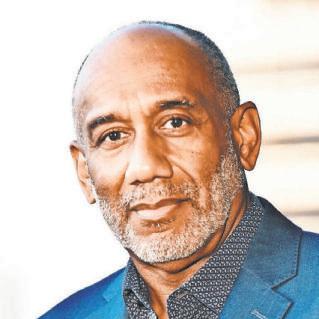






There is an idea, a life approach sweeping the nation, or at least those circles where individuals and organizations are obsessed with growth and development. It’s called “Radical Responsibility.”
If you look it up, you’ll find just as many different definitions for “Radical Responsibility” as there are articles breaking it down. But what they all have in common is this core belief that if you (the individual, organization or group of people… i.e. Blackfolk) are serious about achieving your aims and becoming the best, most powerful and impactful version of yourself, the best way to get there is to accept full responsibility for any and all things that happen to you.
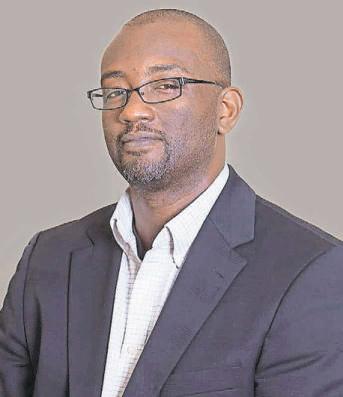
That means, if you have a specific goal, and you don’t meet that goal, even if the actions or inactions of others played a role in you missing your mark, you still accept complete and full responsibility.
Social scientists and life coaches who preach this gospel of “Radical Responsibility” say that taking such an approach, refusing you use anything outside of your own intelligence, work ethic, creativity and grit as an excuse for you falling short, rewires your brain and intestinal fortitude to be able to exponentially increase your chances of being successful moving forward.
Using that logic, Blackfolk need to apply this “Radical Responsibility” mindset to our review of what in the actual hell happened on Nov. 5. How did we allow a 34-time convicted felon, racist, sexual predator who epitomizes unearned privilege and overused anti-Blackness, to defeat the over-qualified VP Kamala Harris for the presidency?
The easy route would be for us to blame the Trump victory on white people being white people—no matter what they say about being for women’s rights, ending racism, being in solidarity with workers’ rights and the need for criminal justice reform and voting rights protections, at the end of the day their klan always, always comes through to protect the myth
of white supremacy and reality of white power domination—to hell with things like humanity, justice, equality, democracy, etc. Or we, Black people, could lament how our Latinx sisters and brothers fell for the okey-doke, and put in office someone who hates Brownfolk nearly as much as he hates Blackfolk.
We could even place all the blame on members of our own house who didn’t vote or who voted for a dude endorsed by the klan, neo nazis, and white domestic terrorist groups that pray to their messiah for a race war so they can take us all out.
But “Radical Responsibility” says we must look solely in the mirror and ask ourselves, what have we not done nearly enough of, and what have we done too much of, over the past months, years, decades that’s squashing our ability to build the kind of society (world) we want and need?
Whatever the answers are, we’re responsible for allowing anti-Black agents to convince so many of our people that voting doesn’t matter. We’re responsible for believing white women would ever vote for our common humanity over their white privilege. We’re responsible for allowing misinformation to hold more weight with our people than facts and history. We’re responsible for not demanding the Democratic Party do what Rev. William Barber has been crying in the wilderness about—centering that huge, untapped voting bloc, the poor. We’re responsible for allowing Dems to stay committed to Israel’s Gaza genocide even as their base screamed for change. Long story long, we’ve f’ed around and we’re about to find out what not taking care of business looks and feels like. And blaming anything or anyone outside ourselves, won’t move us forward to where we want and need to be.
• Tina Knowles to drop new memoir in April 2025.
• Nepotism gave Bronny James a leg up... so who cares?
• Ladesmond Rhone scores 4 TDs in Sharpstown’s win over Austin.
By scanning the code, victims can access essential resources, including safety planning and legal services
By Tannistha Sinha
Christina Abner (33) died after her boyfriend Keith Lee (34) shot and killed her in her home last year, 10 days before Christmas. Lee then assaulted and injured Abner’s three children, ages two, four, and 10. The older children fled and asked for help from a neighbor, after which emergency responders took Lee and the children for treatment at the hospital, after he killed their mother and injured them.
Lee, who has a history of abuse, was charged with murder and three counts of injury to a child. The month before Abner died, authorities charged Lee with harassment after Abner reported him thee times in the six months prior.
Abner’s story is one of 205 Texas stories who were killed by their partners, comprising 179 women and 26 men. Perpetrators also killed 16 and injured 12 others, according to data from the Texas Council on Family Violence (TCVF).
In Texas, 64 counties experienced at least one domestic violence homicide, with Harris County leading the chart with 35 women and three male victims. It is followed by
• Dallas (26 victims),
• Bexar (14),
• Tarrant (8),
• Travis (6) and
• Hidalgo (6) counties.
Abusive partners killed more victims in domestic violence incidents than all other means combined.
Out of the 205 cases,
• 142 were shot,
• 29 were stabbed,
• 10 were physically assaulted,
• 11 were strangled, and
• 14 by other means.
Among women, the youngest killed was
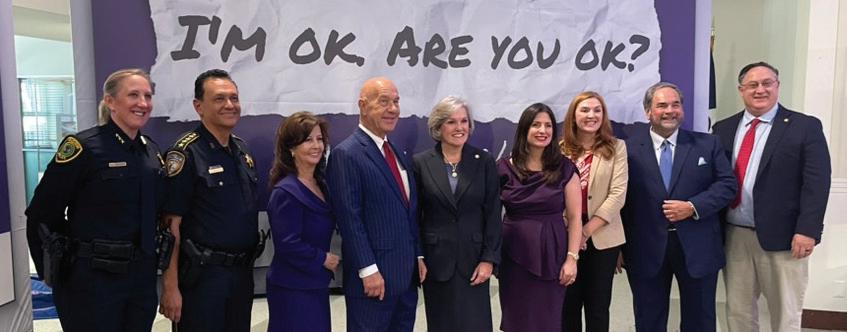

15 years old, while the oldest was 88. The youngest man killed was 18, while the oldest was 66.
To address this issue, Houston city, in collaboration with Council Member Twila Carter, county leaders, police, and organizations launched a new digital domestic violence awareness tool to help victims find resources on their devices and a billboard campaign.
All they have to do is scan a QR code, available in English and Spanish in public spaces across the city, and click on the link that says, “I’m ok. Are you ok?” The city has plans to expand the QR code into Chinese, Vietnamese, and Korean.
The page contains resources, including tools for preparation and planning, like finding safe areas in one’s home, identifying risk areas, protecting children, keeping emergency contacts close to you on your phone, backing your car into the drive, having emergency money, and using code words. It also includes tools to organize paperwork, safe houses, personal items, and legal services after leaving a relationship if danger persists.
Precinct 4 Commissioner Lesley Briones launched the program and said the QR code could be available in 300 sites across her precinct, including parks and community centers.
Jessica Anderson, assistant chief of the Houston Police Department, said domestic violence cases across the city have increased by 20%, making up 10% of all reports.
violence demographics
According to the TCVF reporte, victims in Texas last year included:
• 73 Latinx or Hispanic women (40%)
• 64 white women (36%)
• 43 Black women (24%)
• 11 Asian women (6%)
• Nine white men (36%)
• Nine Black men (36%)
• Four Latinx or Hispanic men (16%)
What organizations say
Sandra Massie Hines, the CEO and founder of Junior Achievers and Sunnyside Silver Hair Seniors Group Inc. and community leader at Sunnyside for more than three decades, said elder abuse must also be stressed. In fact, the Texas Department of Family and Protective Services (DFPS) reported an increase in such cases from 60,000 cases in 2022 to 83,000 cases in 2023.
“Those persons who were reaching out to get help, we weren’t able to get too many people to help them,” she said. “There’s a whole slew of people suffering in silence. The elderly people that call me, they look at their perpetrators every day. It’s their family members, and it’s almost seemingly hopeless to them because these are people they know and then they’re intimidated that you’re not gonna take them seriously.”
Houston Mayor John Whitmire announced that his administration will soon take steps to relocate unhoused individuals from public spaces throughout the city. Speaking at a city council meeting, Whitmire stated, “Very soon, we’re going to have a city-sponsored encampment that will be introduced, possibly this week or next, through the Housing Department and Homeland Security. Public spaces will no longer be acceptable locations for the homeless.”
The council met to discuss extending the city’s “civility ordinance” to include Magnolia Park in the East End. This ordinance, already in place in areas like Midtown and Museum Park, prohibits lying, sitting, or storing personal items on sidewalks during daylight hours.
Whitmire also proposed establishing a “zero tolerance area” for homelessness in Magnolia Park, where Greyhound recently moved its bus station after closing the Midtown location. “The station should never have been placed in a residential community to begin with,” Whitmire added.
Eight residents shared their views at the public hearing, split evenly between supporting and opposing the change. Resident Maribel Picazo expressed concern, saying, “Residents walk in fear of being assaulted, which affects the sense of safety in our community. Our safety has been further compromised with Greyhound’s arrival.” In contrast, resident Shiv Shrivastava criticized the East End Management District for not engaging enough with the community, saying, “We do not need to criminalize homelessness.”


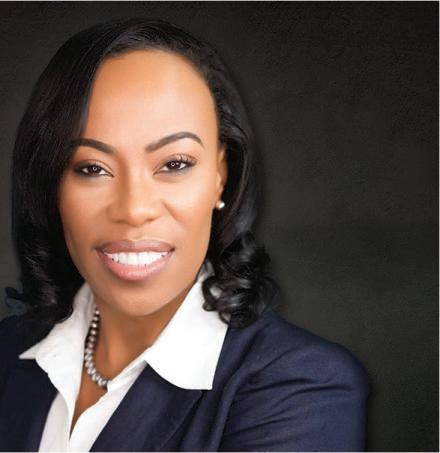

By Tannistha Sinha
In October 2015, a Black 16-year-old in Spring Valley High School in South Carolina, was trapped in a headlock, flipped over, and dragged across her classroom by a school police officer when she refused to surrender a cellphone. Meanwhile, her classmates recorded the incident on their phones. One of those videos went viral, and Deputy Sheriff Ben Fields, called “Officer Slam” by students, was exposed.
However, the girl and her classmate who recorded the video were arrested and sent to juvenile detention on the grounds of “disturbing a school function,” a law later ruled to be unconstitutionally vague.
A report by the Advancement Project analyzed 460 school policing assaults against students by police officers and security guards in the 2023-24 school year. It found that 1,072 students were assaulted between the 2013-14 and 2023-24 school years, and Black students comprise 84% of school policing assault victims.
The report, titled “#AssaultAtSpringValley: The legacy of lynching in school policing,” is written by Tyler Whittenberg, deputy director of the Opportunity to Learn Program at the Advancement Project, and Kaneesha Johnson, post-doctoral fellow at the University of North Carolina - Chapel Hill.
“The alarming spike in assaults against students by school police and security guards underscores the troubling reality that our schools are not safe, equitable or nurturing

environments for students, particularly for Black and disabled youth,” Whittenberg said. “They are quite the opposite. Instead, students are going to school each day in fear of policing assaults, sexual violence, and criminalization.
The study compares data from two lynching datasets from 1882 to 1936. Its aim is to assess the correlation between the Southern era of lynching and modern violence against students by school police and security guards, which disproportionately targets Black people.
With a rise in the frequency of lynchings in a county, the number of policing assaults
also rose. For example, for every additional 100 lynchings in a county, an additional four students are assaulted, with Black students making up a majority of them.
Moreover, more than half (56%) of such assaults occurred in Black and Latino majority schools.
Again, schools in the South make up the bulk (54%) of those experiencing policing assaults.
The ranking of the states with the highest number of assaults are: Florida (53), Texas (39), North Carolina (34), California (26), and South Carolina (24).
“This report reveals a deeply entrenched legacy of racial violence rooted in historical lynchings and its link to modern policing practices in our educational institutions. It’s time to dismantle the myth that policing makes schools safer and confront the systemic injustices that put our most vulnerable students at risk,” Whittenberg added.
The study focuses on the key aspect behind such discriminatory behaviors toward Black students: police officers perceived Black boys as four and a half years older than their actual age and less childlike than white boys of the same age, according to a study. Moreover, adults perceive Black girls as less innocent and do not need as much support and protection as their white peers.
The authors argue school policing will not reduce violence but will, instead, increase the number of Black students to be pushed out of schools, arrested, and placed in youth and adult criminal legal systems.
By Amaka Watson
Texas has been ranked as the third least safe state in America for 2024, according to a recent report by WalletHub. The study, which compared all 50 states across 52 safety metrics, sheds light on critical issues impacting the state’s overall safety, including crime rates, climate disaster vulnerability, road safety, and access to healthcare.
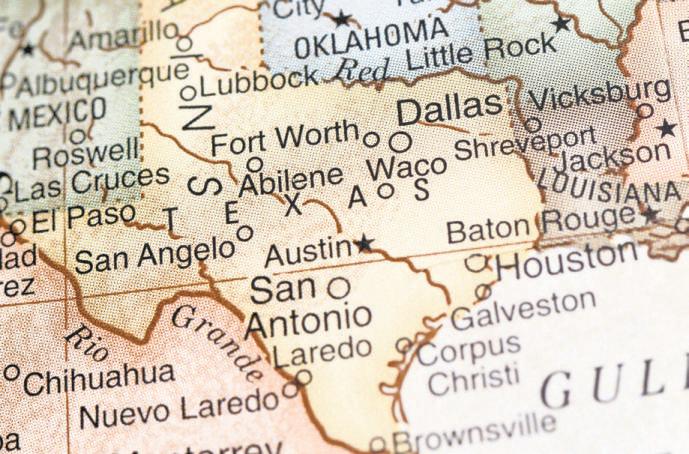
With nearly 14,000 Americans having died from gun violence this year and the country having experienced 20 billion-dollar climate disasters, the personal-finance website WalletHub.
Credit: Keith Binn/GettyImages
The rankings reflect significant concerns for Texans as the state landed at 48th place overall, far behind many other states. With nearly 14,000 Americans dying from gun violence this year and the country experiencing 20 billion-dollar climate disasters, these safety concerns are particularly relevant for residents. The report’s findings not only highlight the state’s struggles with public safety but also reveal some of the underlying factors driving these risks.
Texas fared poorly across several key categories that contributed to its low ranking. Among the most concerning are:
• 33rd in murders and non-negligent manslaughters per capita
• 32nd in assaults per capita
• 41st in losses from climate disasters per capita
• 30th in fatal occupational injuries
• 36th in fatalities per 100 million vehicle miles of travel
• 50th (last place) in the share of uninsured population
The state’s low ranking in healthcare access is particularly troubling, as Texas has the highest rate of uninsured residents in the nation. This lack
of coverage exacerbates vulnerabilities, leaving many without the means to receive medical care, which can worsen the impacts of accidents, illnesses, and natural disasters.
The Affordable Care Act (ACA) Marketplace has opened its 2025 enrollment season, offering millions the opportunity to secure or adjust health insurance plans. In 2024, approximately 4.2 million Floridians enrolled in an ACA health plan, marking a more than 200% increase from 2020, according to White House data. Florida, one of 10 states that hasn’t expanded Medicaid, is seeing around 823,000 residents lose Medicaid coverage.
More than 418,000 Michigan residents signed up for new health plans through HealthCare.gov—a nearly 30% increase over 2023. In Wisconsin, over 250,000 residents secured ACA coverage, as state officials reported. Meanwhile, 1.26 million Georgia residents enrolled, reflecting a 206% rise from 2020, with about 96% receiving an advanced premium tax credit to help cover premiums.
Maryland also saw a 33% increase in Black enrollees and a 30% increase in Hispanic enrollees. In Virginia, 389,568 residents enrolled, marking a 67% increase since 2020, with 88% receiving advanced premium tax credits to help cover costs. Meanwhile, 11,910 District of Columbia residents enrolled, although enrollment has decreased by 26%

since 2020 — about 22% of D.C. enrollees qualified for advanced premium tax credits. With increased enrollment nationwide, this year’s Marketplace offers more options than ever. According to the Kaiser Family Foundation (KFF), consumers can choose from a broader array of plans, with benchmark silver plans averaging a 4% premium increase and bronze plans up by 5%. However, enhanced subsidies introduced under the Inflation Reduction Act (IRA)
continue to make coverage affordable, capping monthly premiums at a percentage of income. Most enrollees on HealthCare.gov can find plans for under $10 per month, despite unsubsidized premiums reaching $497 for a 40-year-old on a benchmark silver plan. KFF researchers noted that some states, like Vermont, Alaska, and North Dakota, face double-digit premium hikes, while others, like Louisiana, see decreases in low-cost plans.
Under the Biden-Harris administration, the ACA Marketplace has expanded to include more insurers, with an average of 9.6 participating insurers per state, allowing 97% of Healthcare.gov users to choose from at least three insurers. The range of options includes silver and bronze plans tailored to meet different healthcare needs. Silver plans, which serve as the basis for subsidy calculations, offer a balance of coverage and cost, while bronze plans provide lower premiums but higher deductibles.
Federal funding has also been allocated to ensure continued support for enrollees. The Biden-Harris administration committed $100 million to the Navigator program, providing more resources to help Americans understand and select the best health plan. Enhanced subsidies—initially introduced under the American Rescue Plan Act and extended by the IRA—are set to expire at the end of 2025 unless renewed by Congress. Without renewal, millions would face premium hikes in 2026, with costs doubling in some cases. A young family of four in Pennsylvania earning $125,000 would see an annual increase of $6,448, while a 45-year-old in Wisconsin with a $60,000 income would experience a $1,354 hike.



Taking care of your health is easier with the right doctor. That’s why we’ve made it simpler to find the provider right for you, with hundreds of affiliated primary care physicians located throughout Greater Houston. So you can get the care you need close to home or work. That’s primary care designed around you.
memorialhermann.org/pc-defender 713.222.CARE (2273)
Advancing health. Personalizing care.

A divided America is sending Donald Trump back to the White House. Voters watched in stunned disbelief as Vice-President Kamala Harris underperformed in the 2024 Presidential election and now many are asking ‘What happened’ and ‘What now?’
Trump failed to make any gains among Black voters, including Black men from 2020.
departing from President Joe Biden’s course. Trump has vowed to replace thousands of federal workers with loyalists, impose sweeping tariffs on allies and foes alike, and stage the largest deportation operation in U.S. history. Trump, 78, is the oldest president ever elected. He is also the first defeated president in 132 years to win another term in the White House, and the first person convicted of a felony to take over the Oval Office.
By ReShonda Tate
Trump was declared the winner with 276 electoral votes to Harris’ 223. The first candidate to reach 270 electoral votes is automatically the winner.
As the first polls closed election night, tens of millions of Americans added their ballots to the 84 million cast early as they chose between two candidates with drastically different temperaments and visions for the country.
Voters said the economy and immigration were the top issues facing the country, but the future of democracy was also a leading motivator for many Americans casting a ballot in Tuesday’s presidential election. AP VoteCast,
an expansive survey of more than 110,000 voters nationwide, found a country mired in negativity and desperate for change.Those casting Election Day ballots mostly encountered a smooth process, with isolated reports of hiccups that regularly happen, including long lines, technical issues, and ballot printing errors.
Harris underperformed Joe Biden’s 2020 race among every single demographic with the exception of college-educated women (and even her showing with them has been underwhelming).
How they voted
While many thought Black men would be the undoing of this race, Exit Polls show
“We gotta stop solely blaming white people when Asians and Latinos went up for that man,” said voter Figaro Newton. “Eighty percent of Black men and 93% of Black women voted blue. We gotta call it out. The country is deeply anti-Black.”
“For white Americans, there is nothing Kamala could have done. Nothing. Trump validates their white supremacy. It has zero to do with policy,” said voter Sean Mac. If Harris had been elected, she would have been the first woman president and promised to work across the aisle to tackle economic worries and other issues without radically

A Trump victory affirms that enough voters ignored warnings from many of Trump’s former aides or prioritized concerns about Biden and Harris’ stewardship of the economy or the U.S.-Mexico border.
It also ensures he avoids going to prison after being found guilty of his role in hiding hush-money payments to an adult film actress during his first run for president in 2016. His sentencing in that case could occur later this month. Upon taking office, Trump could end the federal investigation into his effort to overturn the 2020 election results.
Republicans are also projected to retake control of the Senate for the first time in four years, according to the AP and Edison research. The party flipped several seats. It’s still up in the air which party will control the House of Representatives.
If the Republicans win the House, it will make it much easier for Trump’s legislation to become law with his party controlling the Senate and House of Representatives.









presidential election cycle was the most consequential in modern history and young Black voters are shaping political discourse.
Representing a significant portion of the electorate, Black Americans under 35 have become an increasingly vocal and influential group. Their concerns and expectations can shape the country’s direction in this historic moment.

The political and cultural environment has affected young Black voters’ turnout. In 2008, young Black voters made history by electing the nation’s first Black president, Barack Obama, in record numbers. According to the Pew Research Center, Black voters between 18 and 29 cast more ballots that year than any other racial group in the same age range. Obama’s message of hope and optimism struck a strong chord with young people, who viewed him as a reflection of their hopes for change.
concerns that they believe neither party has sufficiently addressed.
Both candidates have attempted to capitalize on young people’s enthusiasm. Trump has made campaign stops at restaurants and connected with social media influencers and podcasters. At the same time, Harris has tapped into popular radio and television programs, recreating an advertisement inspired by the Pop the Balloon dating show, among other creative strategies.

president at Texas Southern University, has worked tirelessly with other chapters at Historically Black Colleges and Universities (HBCUs) and predominately white institutions nationwide to educate and encourage young people to vote.
Johnson said body autonomy is a key issue that is a high priority in voters’ minds.

During an election watch party hosted by Emerging 100 Houston, Houston Area Urban League Young Professionals, and the 100 Black Men of Metropolitan Houston, several Black professionals expressed having high expectations of whatever candidate America chooses to lead the country.
“I’ve seen some women who have died from not getting the proper care or not being able to get those abortions and some people have unfortunate circumstances. Some people have been raped or assaulted, or some people’s bodies can’t hold a child,” she said.



change and abortion rights. It’s harder for us to build a life when that weighs us down.”
Job security and fair wages also remain at the forefront of concerns for young Black voters. Many entered the workforce during the COVID-19 pandemic and experienced the ongoing economic uncertainty firsthand. As they look to the next administration, they want opportunities for dignified work that offers survival and growth.

“When it comes to women’s health…a man shouldn’t tell me how to run my body if he’s not in my shoes.”
“Jobs that pay a living wage and provide healthcare should be the baseline,” said Billy Pinkston, a student in Houston. “I’m looking for policies that protect workers and uplift communities of color, not just big corporations.”
The Democratic Party wanted to revive the same enthusiasm in 2024 by nominating Kamala Harris. She would’ve been the first woman of color to serve as president. However, the fervor surrounding Obama’s historic win has proven difficult to sustain over time. Black voters of the younger generation are facing a number of urgent
“Things felt more hopeful in 2008,” said Houston resident ChiChi Iwuorie. “Now, people my age are more disillusioned. We’re still fighting the same fights—student debt, job insecurity, and climate change. It’s a critical and pivotal moment... this is like a make-or-break. Are we trying to see change, or are we trying to stay the same?”
What issues should the President focus on?
Kierra Johnson, Collegiate 100 chapter
Despite frustrations, young Black voters remain committed to making their voices heard in this election. A key issue on their minds is student debt, which continues to burden millions of young Americans. Many seek the next president to provide meaningful solutions, whether through loan forgiveness or reforms that make higher education more affordable for future generations.
“I’m not looking for promises that won’t be kept,” said a 26-year-old first-time voter, Destiny Tilson. “I want a plan. Student debt is crushing our generation, so is climate
Another priority for young Black voters is police reform. Calls for systemic change have grown louder in recent years, particularly after the killings of George Floyd, Breonna Taylor, and other Black Americans. Young voters want a leader who will take concrete steps to address police brutality and reallocate public spending to programs that uplift Black communities.
“We need leaders who actually listen to us,” said local hairstylist Kenya Metters. “Reforming how our communities are policed isn’t something we can wait another decade for. We need change now.”
By Aswad Walker
The long and often confusing double races involving leadership for Texas’s historic District 18 is finally over, with Erica Lee Carter, daughter of the late Congresswoman Sheila Jackson Lee, and Houston’s former mayor, Sylvester Turner, emerging as victors.
Lee Carter won the special election for District 18’s “Unexpired Term,” the term for the person who will complete Jackson Lee’s final term in office which ends Jan. 3, 2025.
Turner won the District 18 “Full Term” which will run from Jan. 3, 2025 – Jan. 3, 2027.
Both elections were held on Nov. 5, leaving many fearing that confusion over the two races might impact the chances of Lee Carter and/or Turner winning their races. But voters put that fear to rest, electing both easily.
Carter beat her opponent Maria Dunn with 69.3% of the early votes, according to Preliminary results compiled by the Texas Secretary of State’s Office. Early polling data showed a 70.2% to 29.8% lead for Turner against his Republican opponent Lana Centonze.
Both victors expressed eagerness to get to work, and dive straight in to what’s next for District 18.
“Day one, I will begin working on my reparations commission effort letter and I will also be supporting the Democratic Caucus,” said Lee Carter, during the Election Night Watch Party held for her and Turner at Grooves Houston (2300 Pierce, 77003).
When asked about her top priorities, Lee Carter said, “Disaster recovery dollars, getting our fair share, making sure we have a strong budget when we reauthorize it before


the Dec, 20 deadline and the Reparations Commission to study reparations in our nation.”
The significance of her victory was not lost on Lee Carter, as she will be the person tasked with closing out her mother’s final term.
“My first thoughts are, I wish I could tell her about it directly. I know she’s watching. I wish I could talk to her about it, get even more advice than I’ve already had my whole life. But I’m grateful for the example she set for me and all of the constituents of the 18th Congressional District. And I’ll do my best to finish strong for her.”
Even before the election results were in Turner had already been contacted by former US Speaker Nancy Pelosi, current House Minority Leader Hakeem Jeffries, and Congressman Peter Aguila, underscoring his desire to build upon those relationships.
Still, he took a moment to reflect on how his victory places him as next up in an impressive line of iconic District 18 leaders.
“You can’t replace Sheila Jackson Lee. So, let’s just be very clear about that. In fact, I’m following Barbara Jordan, Mickey Leland, Craig Washington and Sheila Jackson Lee,” stated Turner, who was already clear on his Day One work as a U.S. Congressman.
“The first thing for me is trying to get on the best committees that I can get on. That will help. It’s working the relationships, it’s talking with, getting familiar with the leadership team. Many of them I’ve already gotten familiar with, but that’s number one. You can’t do anything by yourself. So, it is building on those relationships. The congresswoman did that over 30 years. I’m trying to do that in a very abbreviated time span.”
Additionally, Turner has laid out his priorities in terms of issues to tackle.
“The work goes on. The needs of the people in the 18th need to be addressed. So, I look forward to doing everything I can to bring needed resources, federal dollars back to the 18th and to the city of Houston. Sheila
Jackson Lee was exceptional as that. I want to continue that. Secondly, there are a lot of needs in the 18th. There are thousands of people who don’t have access to affordable healthcare, like a person like me have had. The death rate for one of the zip codes in the 18th, there’s 20 years less than the neighboring zip code. So, people need healthcare. That’s our priority. Affordable housing, single family homes, people in apartments who have been evicted; those issues need to be addressed.”
Turner also listed the need for infrastructure improvements to better withstand regular storms and upgrade transportation; and expand workforce training, apprenticeship programs and entrepreneurial opportunities.
Houstonians decisively rejected the Houston ISD’s $4.4 billion bond proposal, with nearly 60% voting against both propositions.
By Tannistha Sinha
After several weeks of debating whether Houston ISD’s $4.4 billion bond proposal, the largest in Texas history, is the best choice for the district at the moment, the debate was settled once and for all. With months of parents, teachers, students, and community members saying, “No trust, no bond,” Houstonians have rejected the proposal.
According to preliminary results released by the Harris County Clerk’s Office, nearly 60% of voters voted against propositions A ($3.96 billion) and B ($440 million) of the bond. With 210,967 people (59.97%) voting against Prop A and 209,447 voters (60.02%) against Prop B, the bond did not pass. Both propositions garnered 40% of votes in favor of the bond.
Harris County Clerk Teneshia Hudspeth said more than 85,000 voters cast their ballots before 10 a.m., and by 7 p.m., 318,811 voters had cast their ballots in Harris County.
Unofficially, the bond was a referendum on HISD leadership. For several months, the bond created a stir in the district, with multiple speakers opposing it vocally during board meetings. While most agreed the funds were necessary to implement campus improvements, the prevalent sentiment was distrust in district leadership with HISD’s state-appointed Superintendent, Mike Miles, at the helm. Miles and a board of managers joined the district after the TEA (Texas Education Agency) took over, citing poor academic performance in Wheatley High School and alleged misconduct by previous trustees.
The bond marks the first significant milestone that Houstonians were required to vote on. In a rare gesture of unity, both the Democratic and Republican parties in Harris County opposed the bond, following teachers’ unions and PTOs. Nonprofits and groups with business backgrounds, like The Greater Houston Partnership, BakerRipley, and Good Reason Houston, advocated for the bond.

“We know that our children need the infrastructure, HVAC systems, and technology, but at this point, we don’t have the trust in the current HISD administration to do what they say they’re going to do. Tomorrow, our teachers will return to work, they will continue to work for our students,” said Jackie Anderson, president of the Houston Federation of Teachers. “We just hope that this is an indication that HISD administration and Board of Managers will look to us to build coalitions so we can move forward.”
Anderson added teachers were left out of the process since TEA took over and more community engagement might have resulted in the bond passing.
HFT’s Corina Ortiz agreed that addressing district leadership will be challenging.
“That’s gonna send a message not only to TEA but also to Mike Miles this past year and a half that we haven’t been able to get any kind of consultation with him either through parents, through our organization, the largest teacher organization in the state of Texas,” Ortiz said. “We’re not gonna go away quietly. We’re just gonna keep crying harder.”
Good Reason Houston, an education nonprofit that advocated for the bond, said the outcome will have “profound implications” for the district.
“We are deeply disappointed that the HISD bond measure did not pass, as we firmly believe in providing Houston’s students and educators with the facilities, safety measures, and technology they need to thrive,” said Cary Wright, CEO of Good Reason Houston. “This outcome means we must continue to work within the current insufficient infrastructure, even though we know students deserve and need more. We stand ready to collaborate with community leaders, educators, and families to explore other ways of ensuring our schools receive the resources necessary to create safe, healthy, and modern learning environments.”
Brittany Smith, a student pursuing a master’s in social work, said voters at the Nottingham Park polls expressed confusion regarding the HISD bond propositions and heard them ask questions about what they entailed.
Houstonians for Great Public Schools, which supported the bond proposal, said the bond’s outcome is a “setback” for Houston’s students.
“With the last bond election held 12 years ago, children have waited too long for essential improvements that would provide a safe and supportive learning environment,” said Veronica Garcia, executive director
of Houstonians for Great Public Schools. “While this setback is disappointing, our commitment to supporting this bond and its goals remains unwavering. However, we can’t afford to wait…The needs of HISD students cannot be put on hold.”
Recap: what HISD planned
HISD said there will be no property tax increases from the passage of this bond. It planned on paying what it owed from the existing rates but relied on the increase in property values across the district. By law, however, the ballot had to say, “THIS IS A PROPERTY TAX INCREASE.”
Currently, district residents are paying off HISD’s last bond, passed in 2012, through property taxes. Now that the bond has failed, HISD may choose to reduce taxes in the future.
Since the bond did not pass, HISD will have to pause its improvements on HVAC, lead abatement, and security issues on several campuses and rebuild or renovate others. Moreover, the district’s “co-location” plan, in which eight schools with dwindling enrollment move into nearby existing campuses, will also have to halt.
By Terrance Harris
It’s not like Texas Southern senior guard Daeja Holmes hasn’t dealt with the low expectations most around the SWAC have for the Lady Tigers.
Tat’s the way it’s been for a while now.
But coming into the 2024-2025 season, their predicted ninth-place finish in the SWAC has motivated the Tigers.
“It makes us more hungry. I feel like we don’t have any respect in the conference,” said Holmes. “So, we just have to come out here and do what we do.”
“Honestly, if we play together and stay together, nobody can be against us. It’s just got to stay in between.”
Expectations—at least within the program—are high in coach Vernette Skeete’s third year. For the frst time since taking over for Cynthia Cooper, Skeete has a team stocked with players she recruited and who all ft into her fux ofensive system.
During her frst couple of seasons, Skeete says it was challenging not just coaching against the opponents on the foor, buit also against the city of Houston and its trappings that ofen had the attention of her players. But she says this group is more focused and that could be a big diference.
“Rent is due” is a phrase that has become familiar around the program.
“Te people that are here really bought into that and it’s just changed for them,” said Skeete, whose team is coming of a ninthplace finish last season but ended the campaign with big wins over Alcorn State and Prairie View. “We want to keep pushing through that and teach them.
“We are going to have bumps and bruises along the way because this is all going to still be new to them. But I think overall through the outcome we are going to be a much-improved team.”

out with some players who should complement Belton and Holmes well.
Holmes, a 5-foot-9 guard, is an explosive player who is the Tigers’ top returning scorer (9.7 points) and rebounder (4.7).
Coach: Vernette Skeete (3rd season)
Last season: 7-22 overall, 6-12 SWAC (9th place)
Predicted 2024-25 finish: 9th
Top returning players: Daeja Holmes, G, 5-9, Sr. and Jaida Belton. C, 6-4, Jr.
Top newcomers: Courtlyn Lourdermill, G, 5-8, Sr., North Texas; Mikayla Malik, G, 6-1, Sr., Tuskegee; Treasure Thompson, F, 6-2, Sr., Eastern Michigan; Aylasia Fantroy, G, 5-11, Soph., Ohio University; Tianna Mathis, G, 5-8, Jr., Blinn College; Deivejon Harris, F, 6-3, Jr., SUNY Sullivan.
The Tigers return Jaida Belton and Holmes as their top two players. But Skeete and her staf hit the transfer portal hard and came
Belton, a 6-foot-4 junior post player, has emerged as a force in the paint and fnished fourth in the SWAC last season in blocked shots with 48.
Skeete is surrounding them this season with players who are long and have diverse skill sets. New additions like 6-foot-3
Deivejon Harris, Ohio University transfer Aylasia Fantroy, Courtlyn Loudermill and Mikayla Malik, Treasure Thompson, Tianna Mathis, and Nya Harmon are expected to give the Lady Tigers a boost this season.

“Tis season feels great because I’m getting good energy from the new girls coming in,” said Belton, who was named to the Preseason All-SWAC second team coming into the season. “Tey want to win and I feel like that’s what we were missing from the past seasons I’ve been here.
“So it’s the energy and every day we want to come in and compete. We are going to compete in practice and we are going to compete in the games.”
What’s missing from the Tigers roster are freshmen, but Skeete says the focus was getting more mature to make a run this season.
“We’re on a race to reach certain goals,” she said. “When the (referees) throw the ball up, we want to be of. We don’t want to look at who we are playing, where we are or what gym we are playing in.
“If I can keep this team in that mentality throughout the course of this season we are going to be very, very successful.”

By Jimmie Aggison
For Waltrip Rams’ senior middle linebacker Camajae Brush, football isn’t just a game—it’s a pathway to things bigger than just wins on the gridiron.
While Waltrip currently leads the 5A-1 Region III District 10 with a strong 6-1 record, Brush’s journey to the top is marked by resilience, determination and a love for the sport that goes beyond competition.
“Playing football makes me stronger mentally and physically and helps me build self-discipline,” said Brush.
His dedication to personal growth has fueled his journey from his early days as a beginner to his current role as a key defensive force for the Rams.
Brush began his football journey in the 5th grade after watching his friend Bryce Muchaw who played for the Pecan Grove Gators. Once Brush got to the seventh grade, he felt it was his time to try the sport. Though new to football, he was eager to learn. However, during Brush’s first season he saw limited playing time—just a few kickoff returns.
He opted out in eighth grade but returned with determination as a freshman at Kempner High School, earning a spot on the freshman team. His talent soon became evident, and by mid-season, he was promoted to junior varsity. By his sophomore year, he had moved up to varsity, playing primarily on special teams. When Kempner’s starting defensive end became academically ineligible, Brush took on the role despite no experience at the position, stepping up as a reliable team player.
“I felt like it was my time to shine so I played hard on the field and worked hard in class,” said Brush. His path took a new direction that spring when he transferred to Waltrip High School. Former Kempner linebacker coach James Washington recommended Brush to Waltrip’s coaching staff, recognizing his potential. Shortly after, Brush found his fit in the linebacker role—a position where his leadership, speed, and grit made an immediate impact.
Brush’s dedication to football also helped him overcome significant personal challenges. In 2017, while in the fourth grade, he and his seven siblings entered the foster care system. After a year in a foster facility, the siblings were split up across different homes. Brush and two younger brothers remained together for a time. Eventually, they, too, were separated. Brush’s younger brother Christopher was adopted while Brush and his other brother Derrick were left waiting for a family.
“I missed having both of my brothers with me, but I knew Christopher’s foster home was best for him,” said Brush.
Witnessing Brush’s struggles, the lawyer handling his CPS case took a personal interest, eventually seeking approval to adopt Brush and his brother Derrick. This marked a turning point, bringing stability and allowing Brush to focus on his goals.

“Living with my biological parents wasn’t the best environment,” said Brush.
The lack of stability impacted his education, leaving him behind in credits by his sophomore year. Realizing he was at risk of being ineligible to complete all four years of football due to UIL age regulations, Brush quickly enrolled in additional junior classes over the summer to catch up, ensuring he could graduate with his class in 2025.
“I’d like to play at the next level,” said Brush. “I’m getting a lot of coaches coming and talking to me. I need a program that believes in me and pushes me to keep going no matter the circumstances may be. I look back at my journey and try to encour age as many as I can to keep pushing through and remember God is always with you, trust him and he’ll lead you to success.”

As the Rams eye a potential district title, Brush reflects on his journey and how football has shaped his life.
“This sport has given me purpose and it’s shown me the power of perseverance,” said Brush.
Brush’s commitment to the game and his teammates underscores the qualities that make him not only a leader on the field but also an inspiration beyond it.
ABOUT CAMAJAE BRUSH
Class: 2025
IG: @5starr_cjj
Twitter: @Camajaebrush_
Position: Middle linebacker
Height & weight: 6-feet-1, 225 pounds
Favorite artist: Mac Demarco
Status: Uncommitted
Favorite subject:
English Language Arts

Shout-outs: My mom Nicole, Collin, Kelsey, Jim, Polly & Noonie







Melissa Bradley
1863 Ventures Founder


Kara Cotto 1863 Ventures Program Manager
By Marilyn Marshall
As America becomes more diverse, the nonwhite population continues to increase. The growth of this “new majority” can be seen in the business world, where entrepreneurs of color must bridge the equity gap.
Undercapitalization remains a challenge, and one organization is working to “accelerate Black and Brown entrepreneurs from high potential to high growth through rigorous leadership training and strategic market access.”
1863 Ventures is a Black-led, Washington, D.C.-based national business nonprofit accelerator and venture capital fund for new majority founders who have been historically underestimated. It supports more than 3,200 entrepreneurs across the U.S.
Kara Cotto, program manager of 1863 Ventures, said there are two pathways to participation: Standard Accelerator Programs, where entrepreneurs can join their alumni network after program completion, and Mobile Accelerator Programs, such as the New Majority
NEW MAJORITY SUMMIT
Part of the 1863 Ventures’ Mobile Accelerator Series. Includes workshops, panels and networking sessions with industry leaders. Focus areas include building a growth-oriented mindset, connecting with target audiences and financial sustainability.
Tuesday, Nov. 12
9 a.m.-5 p.m. Ensemble Theatre, 3535 Main St. Registration $120; $50 for students Info: newmajoritysummit.com 10% discount code: PARTNERS10


AFROTECH CONFERENCE
Largest Black tech conference of the year connects a global community of 20,000+ innovators during digital and in-person events. Includes emerging trends, networking opportunities with industry leaders and conversations with top tech recruiters.
Wednesday, Nov. 13Saturday, Nov. 16 George R. Brown Convention Center
Tickets start at $450 Info: afrotechconference.com
Summit which will be held in Houston on Tuesday, Nov. 12.
Melissa Bradley, founder and managing partner of 1863 Ventures, noted the types of businesses at the top of the list for funding.
“We continue to see growth in technology companies, consumer packaged goods and business services,” Bradley said. “We continue to see founders create businesses in areas where they see a tremendous need and have experience. Founders with strong technology backgrounds lead the way in AI platform development. Trained scientists are now creating patentable and FDA-approved technologies.”
Bradley addressed how technology and automation are impacting Black-owned businesses.
“Technology has allowed the acceleration of Black businesses for those who embrace it,” she said. “Automation tasks have improved marketing campaigns. AI has helped shorten timelines for essential processes. Technology can increase efficiency, save money and improve
customer satisfaction.”
One of the potential challenges facing entrepreneurs of color is the current assault on DEI (diversity, equity and inclusion) programs by conservative lawmakers and the Supreme Court’s decisions on affirmative action.
“There has already been one case where the SBA was challenged on its programs for ‘socially disadvantaged’ business owners,” Bradley said. “The case of Ultima Servs. Corp. v. U.S. Dep’t of Agriculture claimed that the SBA’s 8(a) Business Development Program discriminated against Celeste Bennett, the owner of Ultima Services Corp., because she is white.
“The court’s decision required the SBA to stop using the presumption of social disadvantage in the 8(a) program. Depending on the outcome of the elections, I expect the cases to continue and/or the programs to be terminated,” she said.
Regardless of the challenges new majority founders face, 1863 Ventures is working to reduce barriers and risks across the nation. For more information visit 1863ventures.net.
• Know your numbers and the amount needed over what period.
• Research on the potential funding partners
• Run a financial model assuming funding to understand repayment for debt or dilution for equity.
• Prioritize investing in strategies that generate revenue.
• Prepare best, worst and likely case scenarios so the funders understand the impact of their investment
• Fudge your numbers; be exact and accurate.
• Assume they understand your business, so connect the need for funding to business growth.
• Let others develop your financial models for you; you are the founder, so know your numbers.
• Take money from anyone. Investigate the best funding options for your business.
• Forget the funder is now a part of your business. Keep them informed on the good and the challenges as they are invested in your success.


